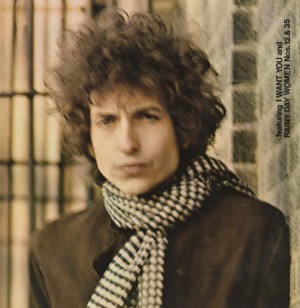
This summer, I picked up David Mitchell’s 2004 book, “Cloud Atlas,” in preparation for the Wachowski-Tykwer-Wachowski* movie adaptation. Mitchell’s book takes the reader on a meandering trail of human lineage from the Pacific Ocean in the mid-19th century to a distant post-apocalyptic future and all the way back again, anchoring the epic in the possibility that everyone, no matter how seemingly insignificant, can have a grand impact on generations to come. Recreating a dense, literary plot structure like this in cinema is no easy feat for a director — let alone three.
When the “Cloud Atlas” film project was announced a general cry of disbelief arose from both critics and fans regarding the book’s plot and charm as seemingly impossible to adapt. Tykwer and the Wachowskis subsequently released a five-minute trailer and impassioned video defense. This, of course, was meant to assuage the fears of fans and critics alike. However, when a filmmaker cannot reduce the movie plot down to the MPAA-regulated trailer length of two minutes and thirty seconds, this is a sign of two things: either the film is a complete mess or its scope is so bold that it just can’t be simply boiled down. In the case of “Cloud Atlas,” it appears that both are true.
As the reviews from the Toronto International Film Festival rolled in, critics were, unsurprisingly, split between declaring the movie a magnificent epic or an overwrought mess. Even the film’s tag-line reveals the ambitious proportions of the plot, production and potential impact: “Everything Is Connected.” Yes, the novel is an intricate read. It takes a little work to truly appreciate the themes and characters linking the stories together. Casual readers may find the novel’s narrative structure to be pure gimmick.
This problem is ten-fold for the movie adaptation. Audiences expect novels to make us work — in a way that we don’t usually want to work to appreciate a movie. When a novel becomes demanding it can be put down and returned to later; movies come full force for two hours. Until the DVD comes out, there is really only that one chance to piece it all together. For this reason, movies have to work doubly hard to present the same kind of themes found in novels, which is why “Cloud Atlas” runs the risk of flopping.
This is certainly not the first time that such a grandiose movie has teetered between genius and flop. For comparison it may be helpful to consider one of the biggest box office bombs of all time: Michael Cimino’s “Heaven’s Gate” (1980). Cimino was fresh off “The Deer Hunter,” for which he won Best Director and Best Picture at the Academy Awards. Winning at least one of the two most coveted film awards will usually set up a director for two or three years of freedom in terms of project scale, budget, production time, etc. Similarly, Francis Ford Coppola used “The Godfather” (1972) to finance “The Conversation” (1974), which won him the top prize at the Cannes Film Festival. He would go on to use “The Godfather Part II” (1974) to finance one of the messiest films of all time: “Apocalypse Now” (1979).
Cimino’s “Heaven’s Gate,” in spite of a bloated budget and an entire year of principle photography, completely bombed upon release. Does this mean it was a bad movie? For financial backers, producers, and the studio — yes. United Artists, the studio that financed the film, racked up staggering yearly losses and was forcibly sold to MGM. While the sale of the studio was the result of many factors, Cimino’s epic was never able to wash off the stench of being what many critics called “the flop that sank a studio.”
Though few films reach the infamy of “Heaven’s Gate,” there are many films that have bounced back from similarly bleak theatrical runs. Frank Capra’s “It’s A Wonderful Life” (1941), the holiday classic, which most cannot pass through the month of December without seeing at least once, lost $500k in in its initial run. “The Wizard of Oz” (1939) didn’t make substantial earnings until it was re-released ten years after opening. The same goes for Orson Welles’s “Citizen Kane” (1941), Sergio Leone’s “Once Upon A Time In America” (1984), Terry Gilliam’s “Brazil” (1985) and many other films that cinephiles now hold dear.
But just how important is making a profit to a movie’s general success? The box office is often thought of as a Darwinian selection for movies. Sometimes if a good movie slips through with box office losses, it is redeemed with an award and re-released the following year. Awards give critics a sort of checks and balances with the studios regarding a movie’s success. But what can be done for the works of genius that inexplicably take the route of the Dodo bird; those movies that aren’t absolved of their messiness till years later? Perhaps too much emphasis is placed on critical and box office success to judge a film’s artistic merit.
So where is “Heaven’s Gate” today — 32 years after its release? This winter you will be able to pick up a copy from the Criterion Collection. That’s right: the Criterion Collection, bastion for the world’s forgotten masterpieces. While negative press, Cimino’s perfectionist personality, Kris Kristofferson’s ridiculous hair, and the movie’s eye-drying four-hour run time were enough to net $41m in initial losses, “Heaven’s Gate” is actually quite genius. Cimino’s film is a brilliant anti-Western set in 1890 Wyoming. Rich coloration, intensely gritty realism, and sweeping landscapes that easily rival those of David Lean and Terrence Malick, make “Heaven’s Gate” a veritable feast for the eyes. Kristofferson and Isabelle Huppert turn in subtle yet powerful performances. An amazing fiddle-based soundtrack from composer David Mansfield — who can be seen minstrelling throughout the plot — beautifully knits all the film’s elements together.
Will “Cloud Atlas” be the next “Heaven’s Gate?” It very easily could. Even in the era of torrents and Tumblrs, amazing films slip past the radar. Tarsem Singh’s “The Fall” (2006) and Gaspar Noé’s “Enter The Void” (2009) have yet to earn the critical and popular interest that they deserve. The truth of the matter is that Hollywood released 610 movies in 2011, which marks a substantial increase from the 135 movies that premiered in domestic theaters in 1980. The Wachowski-Tykwer trio has even bleaker chances than Cimino due to more competition and an incredibly intricate plot to relay. This is not to mention the Wachowski’s penchant for ambitious follies that have few redeeming qualities: the last two-thirds of the “Matrix” trilogy as well as 2008’s “Speed Racer,” which rivals “Heaven’s Gate” for biggest box office flop.
With the amount of mixed reviews coming in there is no mistake that “Cloud Atlas” is messy. But will it bomb, passing through Oscar season, only to reemerge briefly for a Best Sound Mixing nomination before trailing off to the recesses of fandom? Or is it possible that we can appreciate its chaos as an epically large labor of love and not lose this film’s importance for three decades? After all, a magnificent mess is still magnificent.
*In the November print edition of F Newsmagazine the directors of “Cloud Atlas” were erroneously listed as “Tykwer-Wachowski Brothers” in the “Magnificent Messes” article by Joshua Michael Demaree. The author meant the directors to be listed as “Wachowski-Tykwer-Wachoski,” respecting Lana Wachowski’s transition from male to female. We apologize for the mistake.







